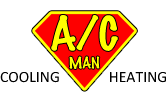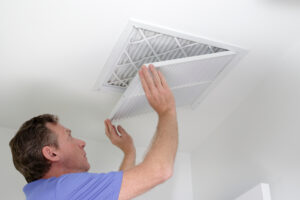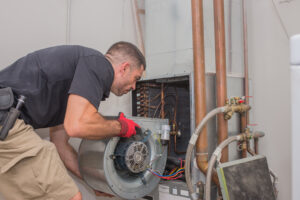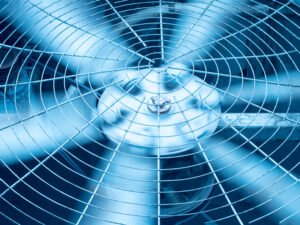4 Types Of HVAC Units In Houston
Most people do not consider the type of HVAC units available when installing one in their office or home. However, there are several types of HVAC units with different advantages and disadvantages. If you or your company are considering an HVAC unit, it may be worthwhile taking a look at the various types available. There are four main HVAC systems: the hybrid system, the split system, the packaged heating, and air system, and the duct-free system. Each of these systems has different drawbacks and benefits and knowing these facts can help you find the best unit for your HVAC needs.
1. The Heating & Cooling Split Systems
 Potentially the most common type of HVAC system is the heating and cooling split system. As the name implies, the system is split between two units – one for cooling and one for heating. The systems are useful because they include both outdoor and indoor HVAC units, which can be easily recognized. The cooling system is outside the unit using compressors, refrigerants, and coils to cool the air; as well as a fan to remove any hot air. This type of unit is often large and installed outside the building, which runs during the warmer months.
Potentially the most common type of HVAC system is the heating and cooling split system. As the name implies, the system is split between two units – one for cooling and one for heating. The systems are useful because they include both outdoor and indoor HVAC units, which can be easily recognized. The cooling system is outside the unit using compressors, refrigerants, and coils to cool the air; as well as a fan to remove any hot air. This type of unit is often large and installed outside the building, which runs during the warmer months.
The heater system in split systems include heaters along with cooling systems and are often installed in the property’s basement or storage space. It heats the air using gas which is dispersed with a fan. The unit then circulates the warm air with an evaporator or. The system uses traditional thermostats to control the temperature released; therefore, it ensures that the preferred temperature is set for the building. The majority of HVAC units are packaged with humidifiers and purifiers to keep the building comfortable regardless of the weather. As this unit is the most applicable without any environmental factors or specific needs, it has become the most widely used option.
2. The Hybrid Split System
Hybrid split systems are very similar to the heating and cooling split system, but with some differences. The hybrid split system mitigates energy costs because of the electric hybrid heating feature which differentiates it from other types of HVAC units. This primary difference, often used by the user, places this HVAC unit apart (and sometimes above) the different system options available. The ability to switch between electric power, which is quieter and more efficient, to gas power, which is more complete and quicker to heat, allows the user to choose how the temperature they want to set for the building.
Highly beneficial in mild climates, the hybrid split system can take advantage of the warmer months using the electric heating options. The system utilizes the standard type of ducts, as well as thermostats, to provide benefits of a split unit. It also offers further features to conserve energy and reduce any utility bills caused by the system.
3. The Mini-Split Or Duct-Free System
The mini-split or duct-free system is unique with specific needs and applications. Unfortunately, it includes a larger upfront installation cost. This type of HVAC unit is an individual unit used in each room. This is useful as it provides increased independent control. This type of unit is typically mounted on indoor walls but are attached to outdoor compressors. The mini-split involves an expensive installation process and is visually obvious for property owners.
The duct-free system is ideal for new house additions, including additional buildings and garages, as it is easy to install and allows better control of the unit. It is also beneficial for service businesses such as event venues and hotels; thereby, allowing tenants to control the room temperature and condition. A further benefit is energy conservation because individual rooms are being heated keeping unused or outside from wasting energy. This is one of the reasons individuals who are retiring, or downsizing opt for the mini-split system. They can keep rooms warm and ensure they don’t use additional energy. The systems do require regular, intensive cleaning and maintenance which is significant to consider when looking at the cost of replacements and repairs.
4. The Packaged Heating & Air System
Of all the HVAC units available, the packaged heating and air system is the niche option. This system uses a contained heating and air unit that can be stored inside the building. It is often kept in top floor storage spaces, such as attics, serving both cooling and heating needs in the house. The unit is also the company making it ideal for smaller spaces in the house; therefore, removing the need to place it outside. This type of system is efficient and easily maintained. They are typically used in warm climates as the heating system is not as powerful as other alternatives. Heat is often electrically generated, but other units can combine both electric and gas abilities.
In conclusion, there are several types of HVAC units available. Now that you have information on these units, you can choose the one most suited to your needs. The split system is the most popular, but hybrid systems are on the rise because of energy efficiency. Duct-free systems are suitable for the service industry or picky families packing the heating for small spaces and warm climates. All of the HVAC units have benefits and drawbacks. To better understand these options, you can contact an HVAC expert at AC Man Houston in Houston, Texas.

 The majority of homeowners’ insurance policies will only cover the damages that your AC unit has sustained due to a “covered peril” which will be listed in the policy. Depending on what type of
The majority of homeowners’ insurance policies will only cover the damages that your AC unit has sustained due to a “covered peril” which will be listed in the policy. Depending on what type of  1. Thermostat
1. Thermostat When you decide to contact an HVAC technician, it involves a lot more than just choosing a well-known company or brand in order to get this job done. It is also important that you have chosen a company that has technicians onboard who will show respect to your home and to you, while they go about completing their tasks. Below is a list of the 10 qualities that all HVAC technicians should possess.
When you decide to contact an HVAC technician, it involves a lot more than just choosing a well-known company or brand in order to get this job done. It is also important that you have chosen a company that has technicians onboard who will show respect to your home and to you, while they go about completing their tasks. Below is a list of the 10 qualities that all HVAC technicians should possess. They Should Be Experienced
They Should Be Experienced You have the HVAC in place, but do you understand how it works? If you know this, then you are in a better position to tell when there is a problem with your heating and cooling system that needs immediate attention.
You have the HVAC in place, but do you understand how it works? If you know this, then you are in a better position to tell when there is a problem with your heating and cooling system that needs immediate attention. 1. Ask For Referrals
1. Ask For Referrals Have you been thoroughly maintaining your home’s HVAC system? If you’re unaware or uncertain that preventive maintenance is essential for your HVAC systems, then you’ll require to read this. A majority of technicians wouldn’t want you to know that your HVAC systems can service you forever if maintained properly. Just as a vehicle does, these comfort controlling devices require attention and care regularly. Your HVAC system should also have scheduled services carried out by a professional HVAC technician.
Have you been thoroughly maintaining your home’s HVAC system? If you’re unaware or uncertain that preventive maintenance is essential for your HVAC systems, then you’ll require to read this. A majority of technicians wouldn’t want you to know that your HVAC systems can service you forever if maintained properly. Just as a vehicle does, these comfort controlling devices require attention and care regularly. Your HVAC system should also have scheduled services carried out by a professional HVAC technician. When your HVAC system does not have a filter, the condensate drain will not be able to work correctly. This means that moisture will not be removed correctly from the unit. When heat is removed from the air, condensation will form on the refrigerant tubing and this will drip into the drain pan. The pan will then drain outside the unit which helps you dehumidify your home as well. The filter on your HVAC system will stop debris from clogging your condensate drain and causing water
When your HVAC system does not have a filter, the condensate drain will not be able to work correctly. This means that moisture will not be removed correctly from the unit. When heat is removed from the air, condensation will form on the refrigerant tubing and this will drip into the drain pan. The pan will then drain outside the unit which helps you dehumidify your home as well. The filter on your HVAC system will stop debris from clogging your condensate drain and causing water